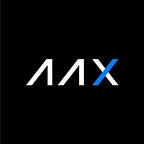Everything You Need To Know About Crypto Futures — AAX Academy
Crypto derivatives have been on the rise in recent years, offering traders a chance to hedge against market risks and increase their potential for profits.
In this article, we will explore digital asset derivatives, their use-cases, and their appeal.
What Are Crypto Derivatives?
Before appearing in the crypto space, derivatives have been popular instruments in traditional finance.
A derivative represents a financial contract between two or more parties with a value derived (hence the name) from a single or a group of underlying assets.
The underlying instrument a derivative is based on can cover a wide range of assets, such as stocks, bonds, commodities, currencies, market indices, and cryptocurrencies.
Unlike spot trading, derivatives offer the option to trade with leverage, which allows traders to amplify their potential profits. At the same time, margin trading — in which users utilize borrowed funds for trading — also comes with increased risks where traders can see their margin liquidated. For that reason, derivatives are considered high-risk assets.
On the cryptocurrency market, the two most common derivatives types are futures and options contracts.
Futures Contracts
In a future contract (or simply future), two parties agree to purchase or sell a digital asset at an agreed price at a future date. Futures contracts are standardized and exchange-traded instruments in which both the buyer and the seller are obliged to fulfill their commitments. Futures usually have weekly, bi-weekly, monthly, quarterly, and bi-quarterly time spans.
However, there is a variant called perpetual futures that does not have an expiry date, allowing buyers and sellers to keep their positions as long as they wish, provided they have not been liquidated.
Options
Options contracts or options are very similar to futures as they also include an agreement between two parties to buy or sell cryptocurrency at a predetermined price and date.
However, the main difference between the two derivatives is that holders don’t necessarily have to exercise their rights to buy or sell on the expiry date.
To enter into an options contract, traders have to pay a price called the premium. If they don’t want to exercise their rights at the end of the contract, they still have to cover the premium’s fees.
There are two types of options: European and American. While the prior can only be exercised on the expiry date, American options allow the parties to buy or sell the instrument any time before the contract’s end.
What Are the Use-Cases of Crypto Derivatives?
Crypto derivatives have multiple use cases, including:
- Hedging against market risk: One of the main benefits of cryptocurrency derivatives is the ability to hedge against market risks. For example, when a trader holds Bitcoin but fears that volatility can affect his investment negatively, he can short a futures contract or option. Derivatives also help users to limit their risks when trading crypto pairs.
- Stabilizing price fluctuations: Crypto derivatives do help not only traders but also miners and merchants in limiting their risks. With futures or options, businesses, validators, and merchants with an inventory can stabilize a digital asset’s price movements, which allows them to focus more on their core activities.
- Shorting digital assets: While spot trading is a great way to benefit from future bull runs, it lacks the ability to make profits when crypto prices are down. On the other hand, derivatives allow traders to short digital assets, in which they borrow cryptocurrency from the exchange (or its users) and use the coins to sell or repurchase them when the price goes down.
- Increased profit potential: Unlike on spot markets, derivatives allow users to trade on a margin with leverage. As a result, they can utilize up to 100 times the amount of coins they hold to enter into long or short positions. For that reason, traders can make more profits if the asset’s price moves in the desired direction. At the same time, the larger leverage they use, the bigger the chance of losing their coins in the case of a margin call.
The Rise of Digital Asset Derivatives
Multiple forms of derivatives have been present in our economies for thousands of years, from the age of Babylonian rulers to medieval Europe.
However, modern derivatives became popular during the 1970s when the Chicago Mercantile Exchange (CME) and Chicago Board of Trade (CBOT) introduced futures and options contracts.
In 2019, the gross market value of derivatives contracts was standing at $12 trillion, according to the Bank for International Settlements (BIS).
Now let’s take a look at the cryptocurrency market.
Since digital assets have high growth potential and increased volatility compared to traditional instruments, it was not surprising to see (mostly smaller) exchanges offering Bitcoin derivatives trading a few years after BTC’s launch in 2009.
However, cryptocurrency derivatives started attracting traders in larger numbers when the CME and the Chicago Board Options Exchange (CBOE) introduced Bitcoin futures in December 2017.
Since then, many cryptocurrency exchanges — including Binance, Deribit, OKEx, BitMEX and AAX — have introduced their own digital asset derivatives solutions.
In the meantime, crypto derivatives have experienced massive demand from both retail and institutional clients, which led to the total trading volume of the assets increasing to $2.7 trillion in Q3 2020 (a Year-over-Year growth of 159.4% from Q3 2019), according to TokenInsight.
Interestingly, the digital asset derivatives trading volume was also surging in Q1 2020, representing a nearly eight times YoY increase from the first quarter of 2019.
Trade Crypto Futures With AAX
The next-generation digital asset exchange AAX has also experienced a huge demand for its cryptocurrency futures contracts, setting a record trading volume at $2.4 billion in early November.
On AAX, users can trade seven different cryptocurrency futures contracts (including BTCUSDT, BTCUSD, ETHUSD, ETHUSDT, BCHUSDT, COMPUSDT, and LINKUSDT) while benefiting from lightning-fast and low-cost trades on a secure, institutional-grade platform.
Are you ready to tap into the growing digital asset derivatives market?
Originally published at https://academy.aaxpro.com on December 24, 2020.
